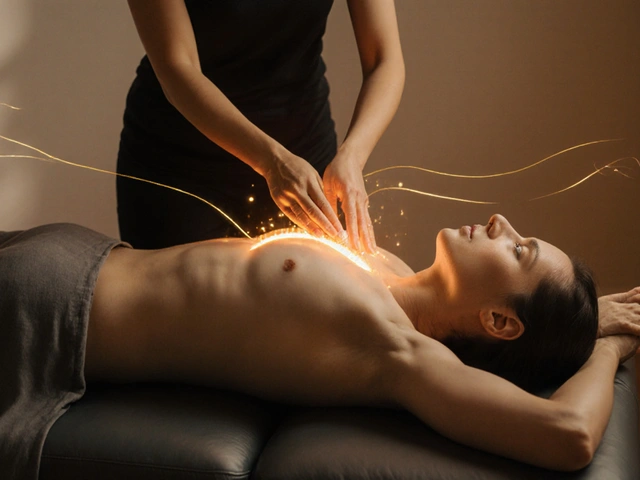Mobility Improvement: Simple Steps and Therapies That Work
Stiff joints, tight hips, sore shoulders — losing easy movement makes everything harder. This page groups articles and real tips you can use right now to move better. Read short guides and pick a simple daily habit to start improving mobility today.
Quick daily habits that help
Start small. Do ankle circles, hip bridges, and gentle spinal twists for 5 minutes each morning. Try 10–15 reps of each movement, slow and controlled. Add a 60-second foam-roll on calves or quads after long sitting to break up tightness. These moves increase joint range without inflaming tissues when done gently.
Use breathing while you move: inhale to prepare, exhale as you soften into the stretch. That calms the nervous system and lets muscles relax faster. If something hurts sharply, stop. Aim for mild tension, not pain.
Which therapy fits your problem?
Different problems need different tools. If stiffness comes from muscle knots, read our pieces on "Trigger Point Massage" and "Trigger Point Massage Therapy" for hands-on tips and self-massage moves. For posture and long-standing alignment issues, check "Hellerwork" and "Rolfing for Scoliosis" — they focus on structural change over several sessions.
Want gentle, movement-based work? "Feldenkrais Training" and "How Feldenkrais Training Transforms Your Yoga Practice" show how mindful movement improves flexibility and lowers injury risk. For chronic pain that flares with heavy treatment, explore "Ortho-Bionomy" articles — they explain soft, body-led techniques that calm pain without force.
Traditional methods like "Hilot Massage" and "Laos Massage" bring cultural approaches that often combine massage, oil, and movement to ease tightness. If you prefer deeper heat, "Stone Therapy" and "Warm Stone Massage" explain when hot stones can safely relax muscles before hands-on work.
For medical causes of limited motion, such as contracture or severe tendon tightness, our "Contractual Tendon Release" articles explain what to expect from noninvasive and surgical options and how rehab supports faster recovery. Talk to a clinician about red flags: sudden severe pain, numbness, fever, or rapidly worsening swelling.
Want a quick plan? Pick one movement habit (5–10 minutes daily), book one consult session with a therapist that fits your issue, and track progress for two weeks. If you see steady improvement, keep going. If not, try a different approach or seek medical advice.
Explore the linked articles on this tag to learn simple routines, therapist selection tips, and when to move toward medical care. Mobility isn't magic—it's small, consistent changes plus the right help when needed.

Exploring Contractual Tendon Release Therapy: Harnessing the Power for Mobility and Pain Relief
Contractual Tendon Release is a transformative therapy that aids in improving mobility and alleviating pain caused by tendon contractures. This treatment approach can be life-changing for individuals facing debilitating conditions that limit movement and cause discomfort. The article provides comprehensive insights into how this therapy works, its profound benefits, the ideal candidates for treatment, and advice on maximizing its effects. Additionally, curious facts and personal experiences may imbue the content with relatable depth and authenticity.
Categories
- Health and Wellness (148)
- Alternative Therapies (86)
- Massage Therapy (40)
- Travel and Culture (15)
- Beauty and Skincare (9)
- Holistic Health (8)
- Health and Fitness (5)
- Spirituality (5)
- Other (2)
- Personal Development (2)



